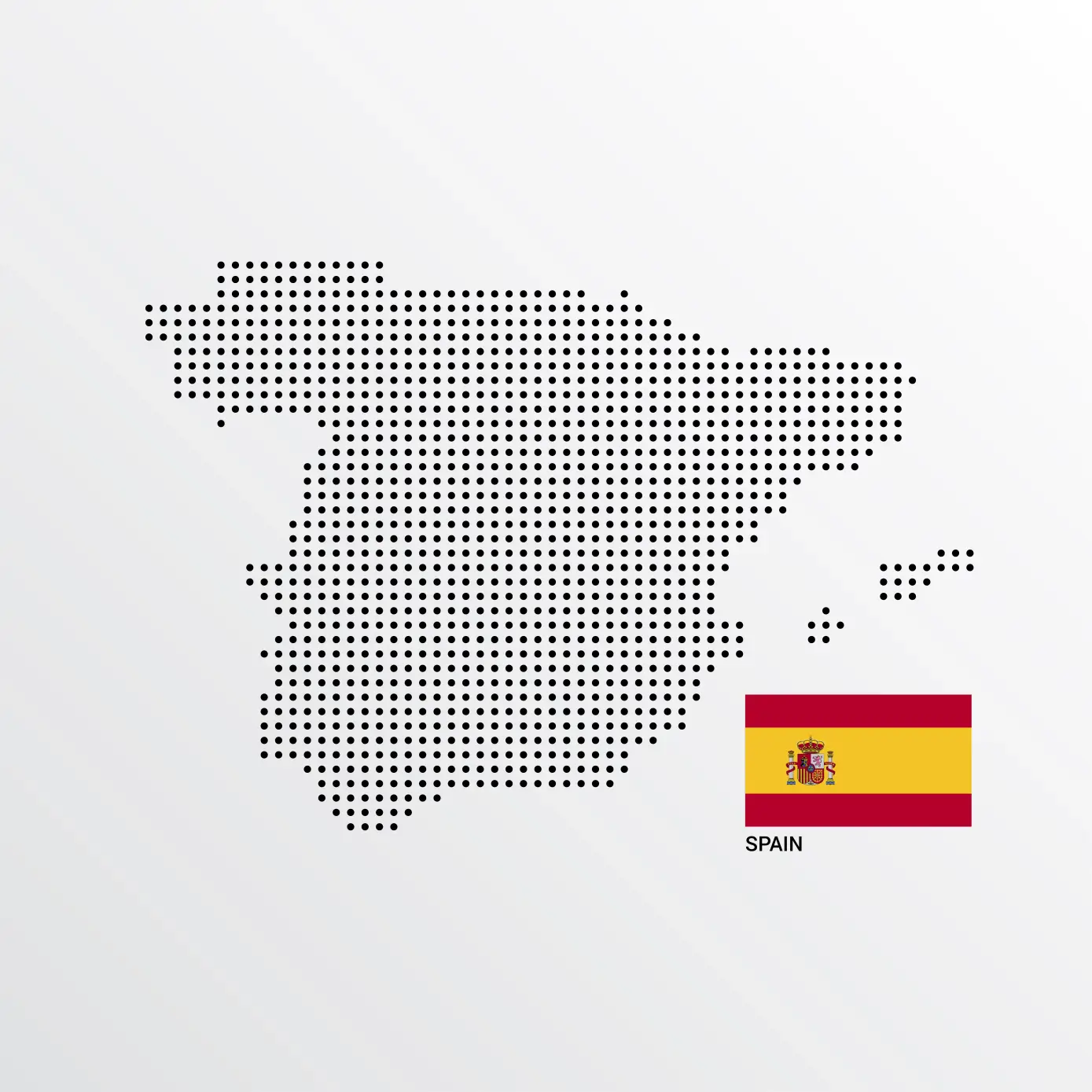Hemp in History
Cannabis, also known as marijuana, is a plant from the Cannabaceae family that has been cultivated for thousands of years for its psychoactive properties and fibrous stalks. Hemp, a variety of cannabis, has historically been valued for its robust fibres, which have been used to make ropes, textiles, and other materials. The earliest records suggest that cannabis was first cultivated in Central Asia before spreading to other parts of the world, including Europe.
Cannabis has played a significant role in Spanish history, influencing various aspects of culture, medicine and industry. The plant was first introduced to Spain during the Moorish period, around the 8th century. The Moors brought with them advanced agricultural techniques, including the cultivation of cannabis. In early Spain, cannabis was used for medicinal purposes, treating ailments such as pain and inflammation. Additionally, hemp, a variety of cannabis, was cultivated for its strong fibres, which were used in making ropes, textiles, and paper.
During the Renaissance, Spain saw a flourishing of arts and sciences, with cannabis playing a part in this cultural revolution. Hemp fibres were essential for producing paper, which was crucial for printing books and spreading new ideas. As Spain expanded its empire to the Americas, cannabis cultivation was introduced to the colonies, particularly in South America, where it was used both for its fibres and its psychoactive properties in traditional medicine and rituals.
The period between the 18th and 19th centuries saw an increase in the industrial use of cannabis. Hemp became a staple crop in Spanish agriculture, with its fibres being used for a variety of industrial purposes, including the manufacturing of sails and ropes for the Spanish navy. The economic importance of hemp cultivation grew, making it a significant part of the Spanish economy during this era.
For most of history, hemp and by extension cannabis, was not a polarizing topic of debate. It was a robust source of crucial fabric which impacted cornerstones of modern industries, such as literature, textiles and maritime efforts. By the 20th century, cannabis’s status evolved from a valued agricultural product to a controversial substance, setting the stage for the complex and often polarized modern discourse surrounding cannabis, as synthetic fibres became more prevalent. During this period, the Spanish government began to regulate cannabis more strictly, influenced by global trends towards prohibition. Despite these regulations, cannabis continued to be used recreationally, particularly among bohemian circles and artists.
Cannabis in Modern Spain
The mid-20th century was marked by increased regulation and the rise of the counterculture movement. In the 1960s and 70s, cannabis use became a symbol of rebellion against the dictatorship of the Franco regime. The regime’s authoritarian policies included harsh penalties for drug-related offenses, and cannabis was no exception. During this period, cannabis use was driven underground, with limited access and significant social stigma attached to its consumption. Despite this, the influence of global counterculture trends led to a resurgence in recreational cannabis use. Spanish artists, musicians, and writers embraced cannabis, integrating it into their creative processes and works. Despite its rising popularity, Spain maintained stringent laws against cannabis, such as the 1983 Organic Law 1/1992 on the Protection of Citizen Security, which prohibited public consumption and possession.
As Spain transitioned to democracy in the late 20th century, the legal landscape for cannabis began to change. The transition to democracy following Franco’s death in 1975 opened the door for social and political reforms, including a more liberal approach to drug policy. The 1980s and 90s saw a growing movement towards legalization, with increasing public support for medical cannabis. By the early 2000’s, Spain had established a framework for the legal use of medical cannabis, positioning itself as a progressive leader in Europe. As Spain is divided into multiple autonomous communities, cannabis laws varied greatly in terms of recreational use. The cannabis under consideration is very specifically cannabis with a psychoactive effect, and all actions that relate to cannabis apart from sale or trade are not considered criminal offenses. Normally, these other acts are misdemeanours punishable by a fine, such as smoking in public. Hundreds of these private ‘cannabis clubs’ exist in Spain today. Essentially, these clubs are considered ‘non-profit’ association, that grow cannabis on behalf of their members and distribute said harvest in exchange for the costs of production. While these cannabis clubs technically operate in the ‘grey area’ legally, which has resulted in somewhat ambiguous enforcement, the model has garnered global attention.
Cannabis, Spain, and the Larger World Impact
Spain’s cannabis landscape has influenced domestic policies and had a significant global impact. The cannabis social club model has inspired similar initiatives in other countries, promoting a community-based approach to cannabis consumption. Spain’s progressive stance on cannabis research has also contributed to the global body of knowledge, particularly in medical cannabis. For example, Spain was one of the first countries to adopt Sativex. Sativex is a cannabis extract that alleviates neuropathic pain, spasticity, overactive bladder and most importantly, symptoms of multiple sclerosis. The studies behind the cost-effectiveness of Sativex application in Germany and Spain are still being used to push for government reimbursements on these medications. The country is also home to renowned researchers such as Dr. Manuel Guzmán, whose pioneering work on the anti-tumour properties of cannabinoids has garnered international recognition.
Internationally, Spain’s evolving cannabis laws mirror broader shifts seen in countries like Canada, Uruguay, and several U.S. states, which have moved towards legalization and regulation. This global trend reflects a growing recognition of the potential benefits of cannabis, challenging long-standing prohibitionist policies. Spain’s experience offers valuable insights into balancing regulation, public health, and individual freedoms. As the prohibition-era propaganda against cannabis use begins to go up in smoke, there are still many countries and communities who do not have a legal framework to establish legalization. Unique situations such as that in Spain can therefore be used as an example of how the innovative use of legal frameworks can help in decriminalization, as well as recreational and medical access.
The rise of cannabis social clubs and the liberalization of cannabis laws have positioned Spain as a popular destination for more than just normal tourism. Tourists flock to cities like Barcelona and Madrid to experience the unique cannabis culture. These clubs offer a safe and legal environment for cannabis consumption, attracting enthusiasts from around the globe. Cannabis tourism has boosted local economies and sparked discussions about the potential benefits and challenges of this emerging industry. The influx of tourists seeking cannabis experiences has prompted considerations about regulation, public safety, and the impact on local communities. Spain’s experience with cannabis tourism has provided a case study for other countries exploring similar avenues.
Moreover, Spain’s cannabis culture includes events such as Spannabis, one of the largest cannabis fairs in the world and the largest in Europe. This event has been held in Barcelona since 2002, spanning products from cosmetics, footwear, textiles, building materials, food, farming systems, phytotherapy and more. The fair attracts international attention, fostering dialogue and collaboration among advocates, researchers, and businesses.
With this evolution of cannabis in mind, it seems that the general counterculture trend started in the early 2000’s will dictate the future path of the plant. It once was a great source of industry, income, medical opportunities, spiritual experience and recreational possibilities. We can only hope that the past few decades have only been a bump in the larger role that the plant has to play in history.
PREGUNTAS FRECUENTES
Is cannabis legal in Spain?
Cannabis is decriminalized for personal use and cultivation in private spaces in Spain. However, public use and commercial sale remain illegal.
What are cannabis social clubs in Spain?
Cannabis social clubs in Spain are private, non-commercial organizations where members can cultivate and share cannabis for personal use. They operate in a legal grey area but are generally tolerated by authorities.
Can tourists legally use cannabis in Spain?
Tourists can legally consume cannabis in private settings or in cannabis social clubs if they become members. Public consumption is illegal and can result in fines.
How do you join a cannabis social club in Spain?
To join a cannabis social club in Spain, you typically need to be referred by an existing member, be over 18 years old, and pay a membership fee. Each club has its own specific requirements and procedures.
What are the penalties for possessing cannabis in public in Spain?
Possessing cannabis in public can result in administrative fines ranging from €601 to €30,000, depending on the amount and circumstances.
Is medical cannabis available in Spain?
Yes, medical cannabis is available in Spain for patients with a prescription. The Spanish government has approved the use of cannabis-derived medicines for certain medical conditions.
Where can you buy cannabis seeds in Spain?
Cannabis seeds can be legally purchased in Spain from specialized shops, online retailers, and at cannabis fairs such as Spannabis. Growing seeds is legal if done in private for personal use.
How does Spain regulate cannabis cultivation?
Private cultivation of cannabis for personal use is decriminalized in Spain. However, large-scale cultivation without proper authorization is illegal and subject to criminal penalties.
What is the legal status of CBD products in Spain?
CBD (cannabidiol) products are legal in Spain if they contain less than 0.2% THC. These products can be found in health stores, pharmacies, and online, but must not be marketed as medicines.







